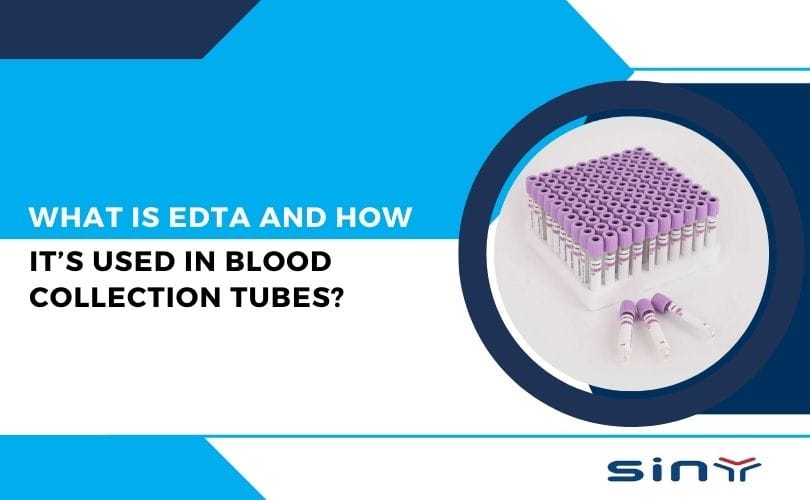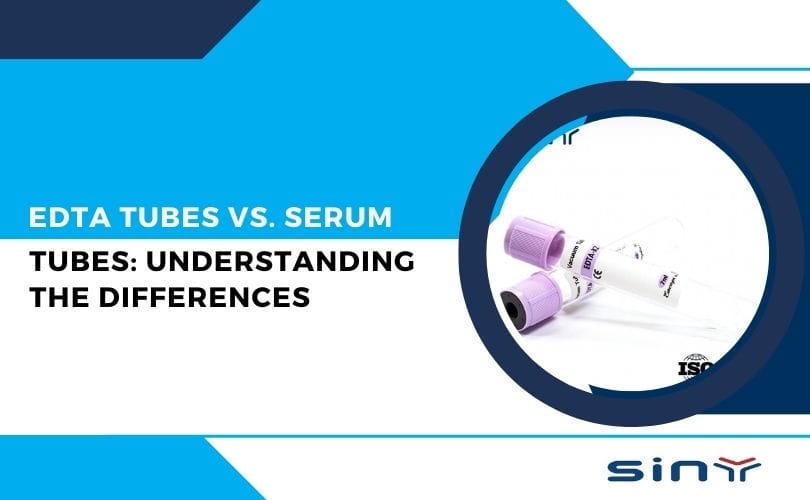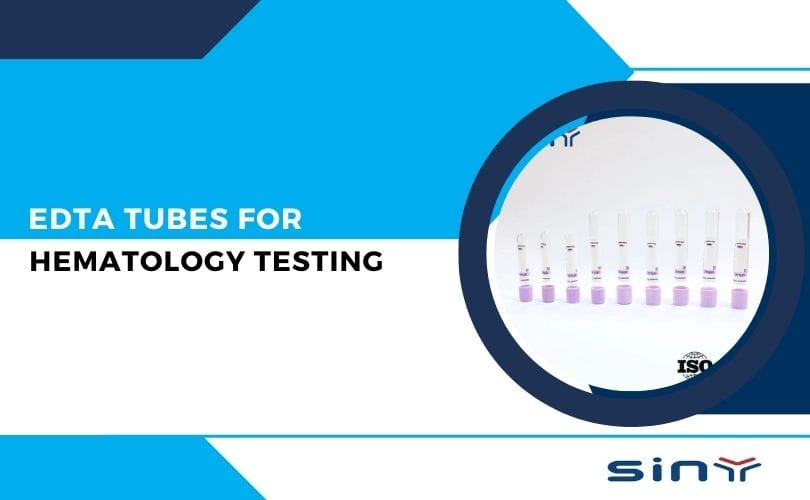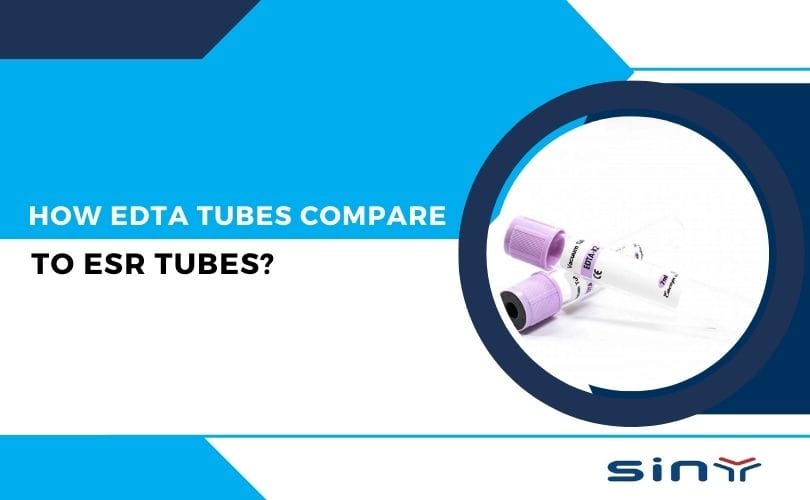In the realm of clinical laboratory practice, the accuracy and reliability of blood test results hinge significantly on the quality of the collected specimen. Particularly in routine hematology and HbA1c testing, the choice of anticoagulant is paramount. EDTA (Ethylenediaminetetraacetic Acid), a classic and highly effective chelating agent, is extensively used in vacuum blood collection tubes and has become a staple consumable in medical laboratories. This article delves into the nature of EDTA, its working mechanism, its applications in blood collection tubes, differences between EDTA types, comparisons with other anticoagulants, and practical usage considerations to aid laboratory professionals and procurement staff in better understanding this essential material.
What Is EDTA and How Does It Work?
EDTA, short for Ethylenediaminetetraacetic Acid, is an organic compound renowned for its robust calcium-chelating properties. Calcium ions (Ca²⁺) are pivotal in the coagulation cascade, and EDTA binds to these ions, rendering them inactive. By doing so, EDTA effectively inhibits the blood’s ability to clot. Importantly, the anticoagulant effect of EDTA is irreversible, meaning that once it binds with calcium, the blood cannot be re-coagulated. This property makes it highly reliable in blood cell analysis but unsuitable for tests involving coagulation function.
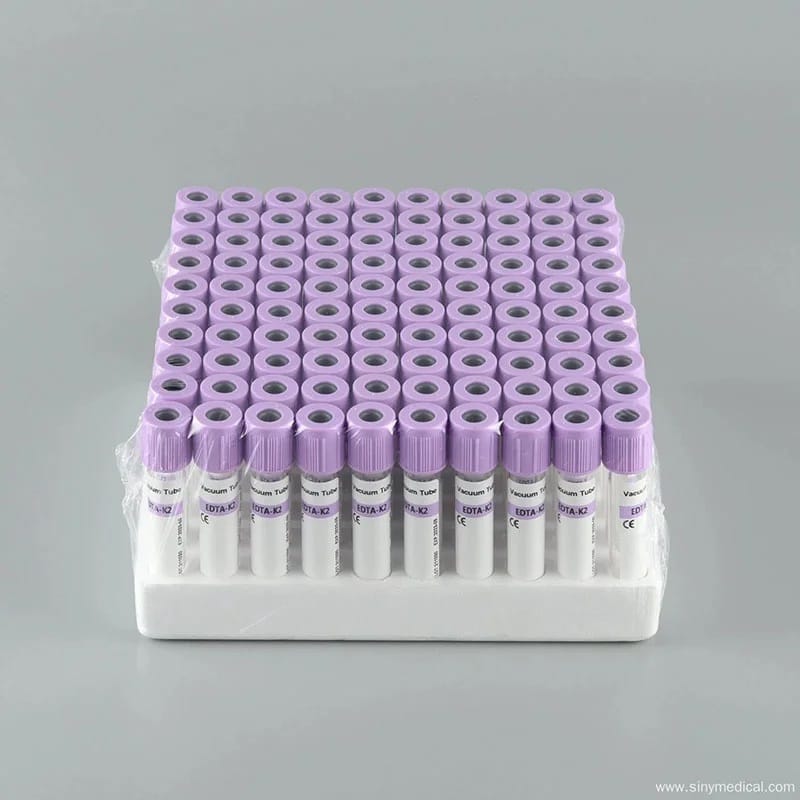
K₂EDTA vs K₃EDTA: Two Common Forms
EDTA used in blood collection tubes typically comes in potassium salt forms, either K₂EDTA or K₃EDTA.
K₂EDTA (Dipotassium EDTA)
- Applied as a dry spray on the inner wall of the tube.
- Minimal impact on cellular morphology.
- Ideal for hematology tests, HbA1c, blood typing, and DNA preservation.
K₃EDTA (Tripotassium EDTA)
- Pre-filled in liquid form.
- May cause slight swelling of red blood cells, potentially affecting results.
- K₂EDTA is gradually replacing it in most laboratories.
K₂EDTA is now the preferred choice in most clinical settings due to its excellent compatibility with automated analyzers and its ability to preserve blood cell integrity.
Clinical Applications of EDTA Blood Collection Tubes
EDTA tubes are widely used across various clinical testing scenarios, including:
Routine Hematology (CBC)
Used to determine red blood cell count, white blood cell count, hemoglobin level, platelet count, hematocrit, and more. It is one of the most commonly ordered lab tests in clinical medicine.
HbA1c Testing
EDTA stabilizes the blood sample, making it suitable for long-term glucose monitoring in diabetic patients through glycated hemoglobin levels.
Blood Cell Morphology and Differential Count
Ideal for smear preparation and microscopic examination, especially in diagnosing anemia, leukemia, and other hematologic conditions.
Blood Typing and Crossmatching
Used in transfusion preparation to determine ABO/Rh type and screen for incompatibilities.
Molecular Diagnostics
EDTA preserves nucleic acids and prevents enzymatic degradation, making it suitable for DNA extraction and PCR-based analysis.
Technical Advantages of EDTA Tubes
EDTA blood collection tubes offer multiple technical benefits:
- Reliable anticoagulation: Keeps blood in a stable condition for several hours at room temperature.
- Preserves cell morphology: Ideal for accurate cell counting and analysis.
- High compatibility: Works with most automated hematology analyzers.
- Protects DNA integrity: Ensures quality for genetic and molecular assays.
- Easy handling: Requires no refrigeration and minimal post-collection processing.
Usage Considerations for EDTA Tubes
To ensure accurate results, healthcare professionals should follow these guidelines when using EDTA tubes:
- Maintain the correct blood-to-anticoagulant ratio: Over- or under-filling can distort results.
- Mix immediately after collection: Gently invert the tube 8–10 times within 30 seconds to ensure thorough mixing.
- Avoid heat or sunlight exposure: Store samples in a shaded, cool environment when possible.
- Do not use for coagulation studies: For PT or APTT tests, sodium citrate tubes should be used instead.
Comparison with Other Anticoagulants
Different anticoagulants serve different purposes in clinical testing. Besides EDTA, two commonly used anticoagulants are heparin and sodium citrate.
EDTA works by chelating calcium ions and is the preferred anticoagulant for hematological tests such as CBC, HbA1c, and DNA analysis. It has minimal impact on cellular morphology and is compatible with most modern analyzers.
Heparin functions by inhibiting thrombin and other clotting factors. It is best suited for biochemical assays, such as liver enzymes and electrolytes. However, it may interfere with blood cell morphology and is not recommended for hematological evaluations.
Sodium citrate is commonly used in coagulation tests like PT and APTT. It forms a reversible complex with calcium ions, allowing coagulation to resume upon adding calcium during the testing process. However, it dilutes the blood sample and is not ideal for hematology or morphology studies.
In summary, EDTA remains the most suitable anticoagulant for blood cell analysis, while heparin is favored for biochemical tests, and sodium citrate is essential for coagulation assessments.
Summary
EDTA plays a vital role in modern blood collection and laboratory diagnostics. Its ability to preserve blood cells, protect DNA, and provide reliable anticoagulation makes it an indispensable component in hematology and molecular testing. Understanding the properties and correct usage of EDTA tubes ensures sample integrity and enhances diagnostic accuracy.
For more information on EDTA blood collection tubes, product specifications, or bulk procurement options, feel free to contact Siny Medical’s support team. Explore our comprehensive range of products at EDTA Tube and learn more about our offerings at Siny Medical. For specific product details, visit EDTA Tubes for Blood Collection. For any inquiries, please reach out via our Contact Us page. Additionally, check out our external resources on YouTube and Made-in-China.
FAQs
Can EDTA tubes be used for blood glucose testing?
No. EDTA does not prevent glycolysis. Blood glucose testing should be performed using fluoride/oxalate (gray-top) tubes.
Does EDTA interfere with DNA extraction?
On the contrary, EDTA protects DNA by inhibiting nucleases. It is ideal for preserving genetic material.
Can K₂ and K₃EDTA tubes be used interchangeably?
While both prevent coagulation, K₃EDTA may cause red blood cell swelling. K₂EDTA is generally preferred, especially for cell morphology analysis.
Do EDTA tubes require refrigeration?
No. Samples remain stable at room temperature for several hours; however, for optimal results, they should be tested promptly.

